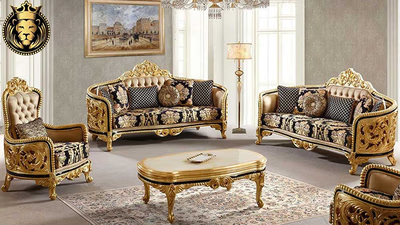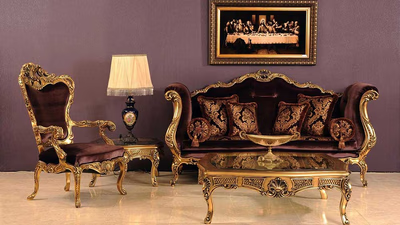
Handmade furniture export: quality standards and compliance.
To enter foreign markets, your products must meet valid quality standards. Check if your products comply with national and international standards such as ISO 9001 or CE (Conformité Européene). To export furniture and wooden products, you should check the export and import laws of your country and the destination country. This includes regulations on import licenses and permits, trade restrictions, taxes and customs. Make sure that the intellectual property rights for your designs and patterns are protected in the destination country. Check whether you need to register your designs and samples or use correspondence related to the protection of intellectual property rights. Wood products must meet appropriate safety standards such as ANSI/BIFMA and EN 1335 standards for the furniture industry. These standards are related to the performance, stability, resistance and safety of products.
Check if there are any restrictions or bans on the import or use of certain wood materials in the destination country. For example, some countries may accept wood products using special and conventionally grown wood such as FSC (Forest Stewardship Council). If your products are subject to restrictions or bans related to the export of divergent species such as wood products containing threatened species, you should be aware of this and comply with the relevant laws. Resources related to species governance and natural resource management are usually determined by environmental agencies or wildlife conservation offices in different countries. Check whether the species used in your furniture and wooden products are protected and whether they are allowed to be exported. The certificates required for export to this market are:
- Certificate of Origin that confirms that your product was produced in the country of origin. Some countries may use this certificate to determine the customs rate and confirm the willingness of customers to buy.
- A quality certificate that shows that your product conforms to accepted quality standards. Some countries may require you to certify your product to relevant national or international standards.
- FSC certificate (Forest Stewardship Council) If the wood used in furniture and wooden products is obtained from managed forest resources, you can request FSC certificate. This certificate shows that the wood you use is extracted from sustainable forests.
- The PEFC (Programme for the Endorsement of Forest Certification) certificate, which is similar to the FSC certificate, shows that the wood you use is from managed forest resources.
- Certification of compliance with safety standards Some countries may require you to certify that your product complies with relevant safety standards, such as ANSI/BIFMA and EN 1335 standards.
- ISO 9001 quality management certificate, which you can request if you are an organization with ISO 9001 quality management standards. This certificate shows that your organization has implemented a valid quality management system.
- Safety certificate and fire test Some countries may ask you to have your wooden products fire tested after using the materials and methods used to make the furniture and wooden products. These tests are to ensure the safety of products against fire.
The destination countries of wooden products and handmade furniture may have set specific standards and regulations for the import of these products. To solve this challenge, you must carefully familiarize yourself with the relevant standards and regulations and design your products based on them. Also, working with local experts and business advisors can help you comply with standards and regulations. Laws related to intellectual property rights, international trade and other trade problems may affect the export of wooden products and handmade furniture. To remove these obstacles, cooperation with commercial lawyers and legal experts can be useful. They can help you determine intellectual property rights, translate contracts and comply with legal regulations.
Among the challenges that may arise in the export of wooden products and handmade furniture are financial and currency problems. These problems can include exchange rates, currency exchanges, currency risk and providing financial resources for production and export of products. To deal with these challenges, you must have a solid financial plan and use currency risk management methods. Also, authentication and dealing with reputable and reliable companies in the field of international trade can help. In the export of wooden products and handmade furniture, problems related to transportation and packaging may also occur. To solve these problems, you can use the following methods:
Choosing a shipping company with experience in transporting wooden products and handmade furniture can be sure to reach the destination with quality and on time. It is very important to pack wooden products and handmade furniture in such a way that they are protected during transportation. Using the right protective packaging materials, designing the right packaging and checking the packaging standards can help to protect the products during transportation. In each country, there may be specific restrictions and regulations for the transportation of wooden products and handmade furniture. Therefore, before starting to export, you should familiarize yourself with these regulations and ensure that your products are compatible with them. If wooden products and handmade furniture have to be transported within the country, proper packaging is also very important for domestic transportation. This can help protect products during domestic transportation. You can use shipping insurance to protect against the risks that may occur during shipping. Transportation insurance can cover damages in the event of an accident and help you repair or compensate for damages.
Check if you comply with the labels and brands required for export to the destination country. Some countries may require labels such as CE mark or FSC mark on wood products. Before entering foreign markets, check if your products are compatible with the cultural diversity and tastes of the target market. Different markets may have different design, color, size and style preferences. Ensure that complete technical specifications and product information are available to external customers. This includes information such as dimensions, materials, colors, features, installation and maintenance procedures, and warranty conditions. Ensure that after-sales service is available to external customers. This includes the ability to provide spare parts, repair services, and technical support.



